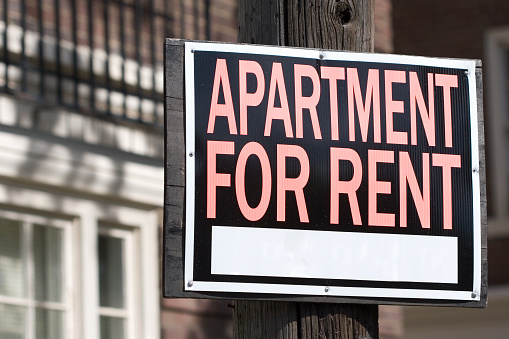
New data reveals Canadian rentals exceed $2K for the first time
In November, the average rental price in Canada topped $2,000 per month, according to a survey issued on Wednesday. Based on the numbers provided, it appears that renters in Canada are forking over an average of $2,024 monthly to cover their housing costs. This number includes anything from studio units to mansions.
That’s a 12.4% increase from the same month a year ago, which is far higher than Canada’s inflation average of 6.9%. Vancouver has the most expensive one and two-bedroom rents in the country, at $2,633 and $3,598 per month.
It was the second most expensive to rent in Toronto. The median monthly rent for a one-bedroom in the city is now $2,532, up 23% from the same period last year. According to the data, the median monthly rent for a two-bedroom unit is $3,347.
Rental costs rose dramatically in other GTA municipalities as well. The cost of living increased by 28% in Brampton and by 19.2% in Mississauga compared to the previous year. Monthly rents in smaller areas west of the GTA also rose, by as much as 27.9% in London and 24.1% in Kitchener.
Only one Canadian city, Halifax, had a higher median rent than the cities of British Columbia and Ontario combined. In Burnaby, British Columbia, tenants paid a whopping 32% more for a one-bedroom flat in October 2018 than they did in October 2021.
The survey found that rising rental prices have shown no signs of slowing down. Since May, year-over-year increases have been in the double digits, with November’s increase being the largest yet.
In a press statement, Urbanation president Shaun Hildebrand said, “Rents in Canada are rising at an extraordinarily fast speed, which is having a dramatic effect on housing affordability as interest rates continue to rise.”
“Demand is shifting to more inexpensive locales in regions with rapid population growth,” the article states, because “the most costly cities are experiencing very low supply and the quickest rates of rent increase.”
Nova Scotia, Newfoundland and Labrador, New Brunswick, and Prince Edward Island had the fastest annual rate of increase in rental prices, at a combined 31.8%, out of all of Canada’s provinces and territories.
There was an average monthly cost of $1,716 for a one-bedroom apartment in Atlantic Canada in the month of November, while $2,032 was the average for a two-bedroom.
The survey found that rent rises were slowest in Montreal, despite the fact that it is Canada’s largest rental market. Builders are cancelling ventures, and investors are afraid to put money into future real estate projects because of the high costs of borrowing.
“Investment in real estate, especially in the condo area, loses some of its appeal as interest rates rise,” Tal added. So, “if you don’t have those units, that’s another factor pushing up the cost of renting what’s left.”
The rising cost of rent is "becoming unaffordable"
“We’re getting near to the point when rents are just becoming prohibitive for tenants,” said, Hildebrand. “It appears that a downturn in economic activity may begin sometime in the coming year. It follows that rentals may see a temporary lull in 2023 “the head of Urbania remarked.
However, it is very evident that rents will continue to grow higher in the medium to long term due to strong immigration targets and rental building that has been halting recently due to high costs. When the weather turns cold, Hildebrand says renters should start looking elsewhere.
There are fewer potential tenants, therefore landlords are often willing to negotiate a lower monthly payment in exchange for your business. Hildebrand argues that governments might introduce incentives to develop purpose-built apartments and make new rental projects more economically feasible, although this won’t help in the immediate term. Rentals.ca’s head of content, Paul Danison, has said that governments need to be more innovative with their zoning policies.
One possible use for these buildings is as lofts with amenities like cafes, shops, and galleries. Alternatives he suggests are inclusionary zoning, laneway suites, and infill construction. There are responses to this problem, but governments are moving too slowly.



